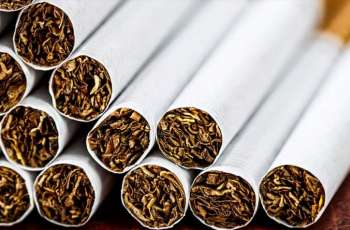Recent research has uncovered a cell mechanism that could help explain why smoking, alcohol, and other modifiable factors could raise the risk of developing the bone disease osteoporosis
Islamabad (Pakistan Point News / Online - 14th May, 2019) Recent research has uncovered a cell mechanism that could help explain why smoking, alcohol, and other modifiable factors could raise the risk of developing the bone disease osteoporosis.The mechanism spurs a cell type in the immune system to turn into osteoclasts, which are a type of cell that resorbs, or dissolves, bone.It appears that mitochondria, the tiny enclosures that produce energy in cells, send out a signal that triggers this process when under stress.
When this happens in the mitochondria of macrophages, the cells turn into osteoclasts. Macrophages are prolific immune cells that remove cell waste and foreign objects by swallowing and digesting them.The researchers behind the discovery hail from the University of Pennsylvania (Penn) in Philadelphia and the Icahn school of Medicine at Mount Sinai in the city of New York. They write about their findings in a recent FASEB Journal study paper.
"We show in this paper that when mitochondrial function is affected, it not only affects energy production but also triggers a type of stress signaling that induces the overproduction of osteoclasts," says senior study author Narayan G. Avadhani, who is a professor of biochemistry at Penn's School of Veterinary Medicine.Some of the environmental factors, such as smoking, drinking alcohol, and certain medications, that can impair the function of mitochondria, also appear to raise the risk of osteoporosis.
Bone generation and resorptionOsteoporosis is a disease that causes bones to become less dense and more porous and brittle. This significantly increases the risk of fracture.As people age, their risk of developing osteoporosis increases. This is because the balance between bone generation and bone resorption shifts with age.By the time most people reach their 30s, their bone density has peaked. After that, bone density declines as the balance gradually favors resorption over generation.
According to the International Osteoporosis Foundation (IOF), 1 in 3 women and 1 in 5 men over the age of 50 will experience a bone fracture due to osteoporosis.The IOF also estimate that around 75 million people in the United States, Europe, and Japan have osteoporosis and that osteoporosis leads to more than 8.9 million bone fractures per year worldwide.In their study paper, the authors write that the mitochondria-to-nucleus retrograde signaling (MtRS) pathway helps cells to adapt to stress.
Damaged mitochondria promote osteoclastsTo explore how mitochondrial damage might be involved, they ran some experiments on laboratory-cultured mouse macrophages. They induced damage in the macrophages by disrupting an enzyme called cytochrome oxidase C, which helps to regulate mitochondrial energy production.This caused the macrophages to release various signaling molecules that not only triggered inflammation but also appeared to prompt the cells to differentiate into osteoclasts.Further examination revealed that something peculiar was happening with another molecule called RANK-L. Bone-generation releases RANK-L, which triggers bone resorption. This helps to keep the balance between the two processes.





